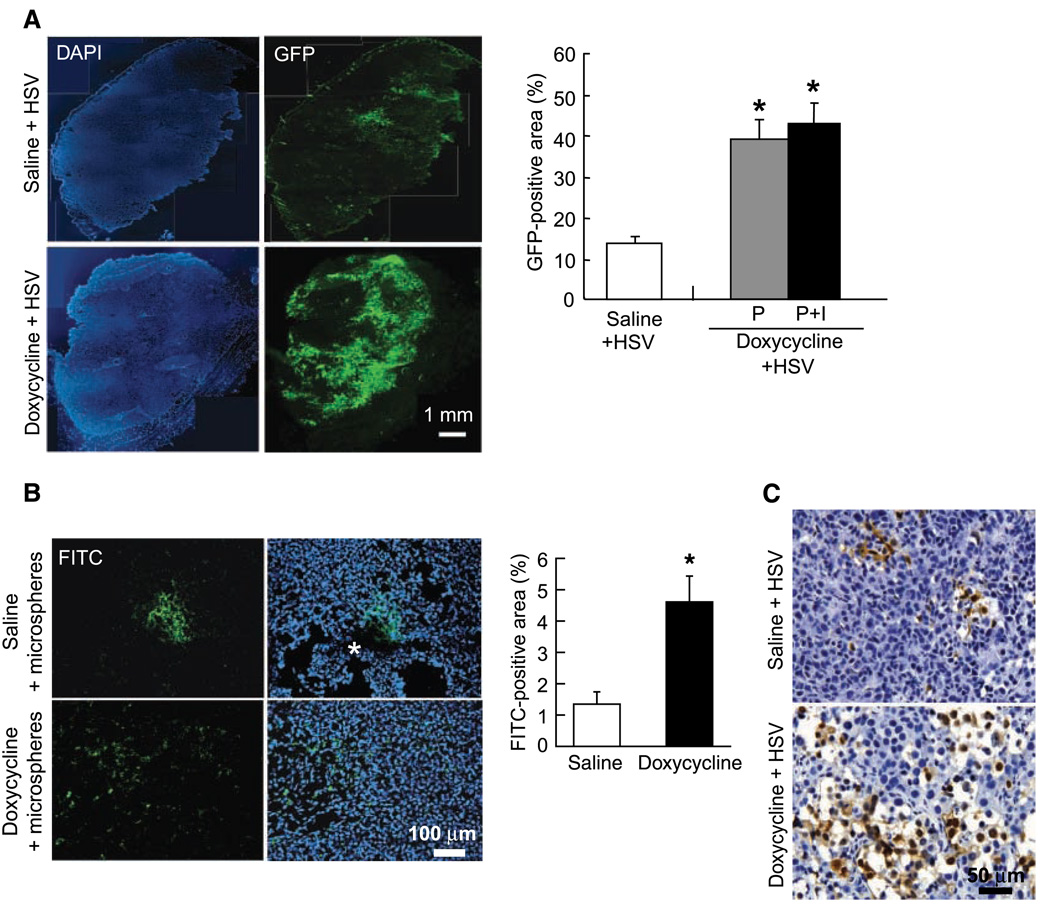Figure 2.
Tet-On activation of caspase-8 enhances the intratumoral spread of oncolytic HSV. A, distribution of oncolytic HSV in 435S-Tet-CD8/Casp-8 tumors. Mice with 435S-Tet-CD8/Casp-8 tumors were treated with either saline or doxycycline via osmotic pumps or osmotic pumps plus i.v. injection followed by the i.t. injection of MGH2 (5 × 105 pfu). In control tumors, GFP-positive cells were distributed in isolated areas in the tumor center. In contrast, caspase-8 activation induced a widespread distribution of the GFP expression from one tumor edge to another. In both P and P+I treated tumors, the GFP-positive area showed a significant increase in HSV dispersion (*, P < 0.001). B, distribution of fluorescent microspheres injected i.t. The microspheres were injected in the center of saline or doxycycline treated 435S-Tet-CD8/Casp-8 tumors, and the mice were sacrificed 30 min later. In saline-treated tumors the microspheres were distributed in small central areas associated with the needle track (*), whereas caspase-8 activation significantly increased the distribution volume of the microspheres (*, P < 0.02). C, HSV immunostaining to assess the morphology of HSV infected areas. In doxycycline-treated tumors, the HSV infection produced numerous and large void spaces, whereas in saline-treated tumors, cell death and void space formation were limited.

